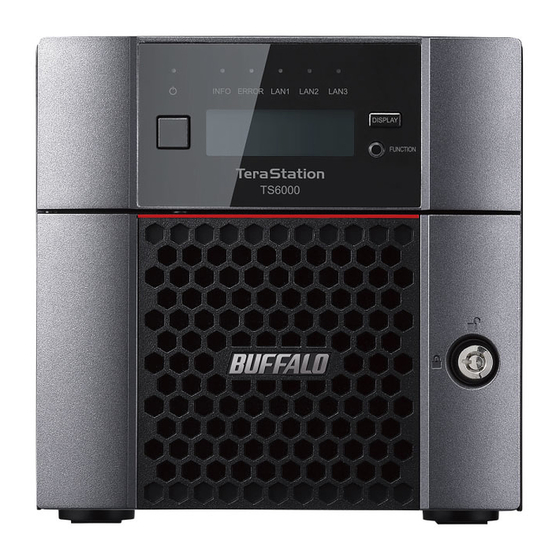Table of Contents
Advertisement
Quick Links
Network Attached Storage
TeraStation 6000
User Manual
TS6200DN Series
TS6400DN Series
TS6400RN Series
Please make sure to read this manual before using and follow the procedures. If you have any inquiries about
the product, contact the number on the warranty statement or the packing box. Do not discard the included
documents, the warranty statement, or the packing box.
Americas: www.buffaloamericas.com
Europe: www.buffalo-technology.com
Asia Pacific: www.buffalo-asia.com
TS6200DN0402
TS6400DN0804
TS6400DN3204
TS6400RN1604
TS6200DN0802
TS6400DN1604
TS6400RN3204
35021637-01
June 2019
Advertisement
Table of Contents















Need help?
Do you have a question about the TeraStation 6000 Series and is the answer not in the manual?
Questions and answers